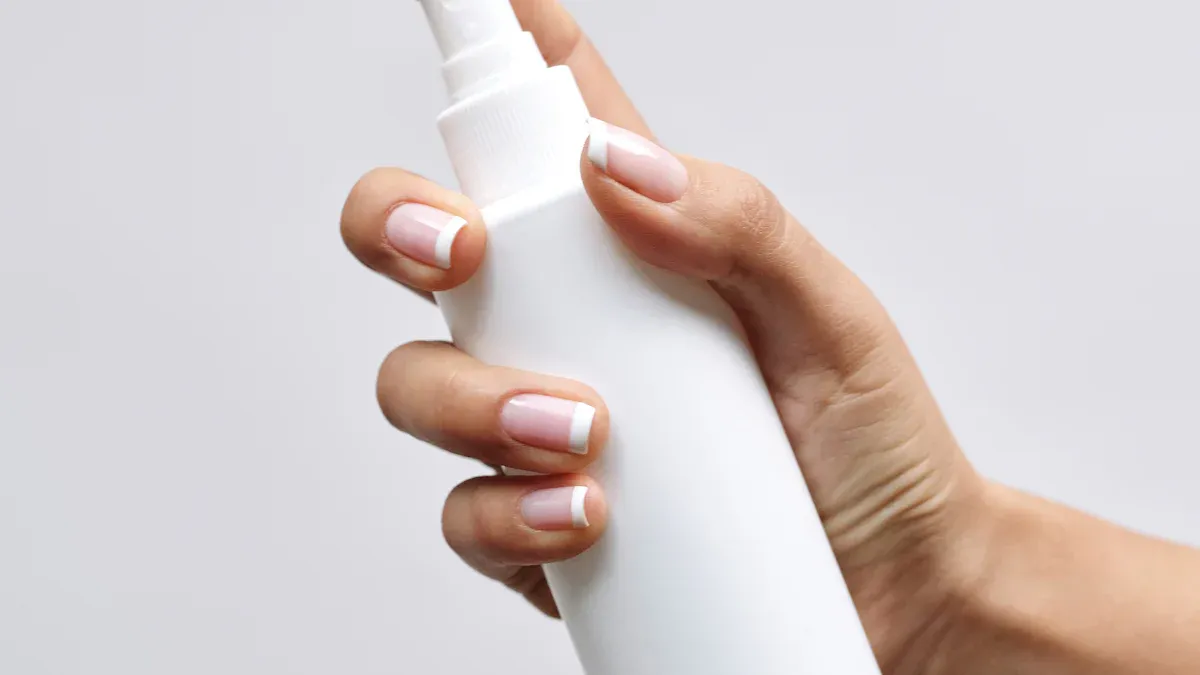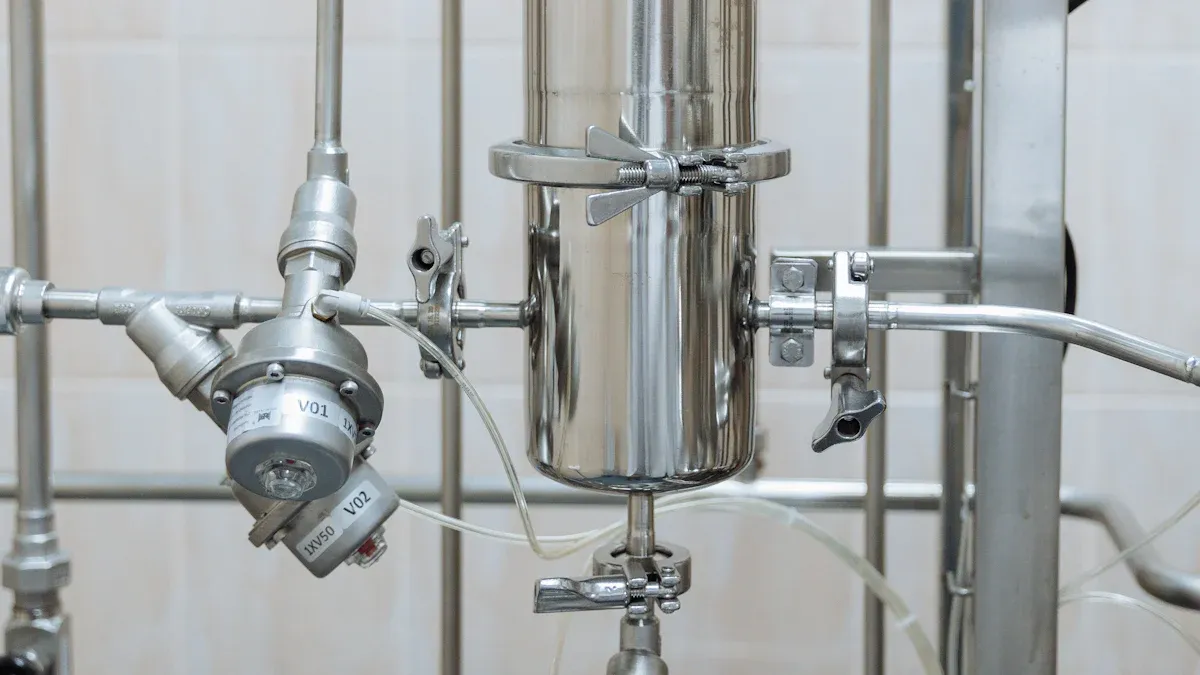0.0001-inch wall thickness PET shrink tubing thinner than a hair

0.0001-inch wall thickness pet shrink tubing is very thin. It is thinner than a human hair. This makes it great for small and delicate parts. It does not add much weight or size. Engineers use 0.0001-inch wall thickness pet shrink tubing when they need things to fit just right. It also helps protect parts without being heavy. Using heat shrink tubing this thin needs careful work. People must follow rules, measure exactly, and know a lot about how to use it.
Key Takeaways
0.0001-inch PET shrink tubing is very thin. It is even thinner than a human hair. This makes it great for covering small, fragile parts. It does not add much weight or size.
This tubing is strong and can bend easily. It does not get damaged by heat or chemicals. It lasts a long time in hard places like medical devices and electronics.
Careful rules and exact measurements keep the tubing safe. It is always reliable and the same every time. This is important for places like hospitals and factories.
The tubing shrinks tightly around wires and parts. It can shrink to half or a third of its size. This gives a neat and tight fit. It helps stop scratches and bending.
Medical-grade PET tubing follows safety rules. It can be cleaned with special methods. This makes it good for medical tools and devices. It keeps them clean and safe to use.
0.0001-inch Wall Thickness PET Shrink Tubing

Definition
0.0001-inch wall thickness PET shrink tubing is a new kind of very thin insulation. The wall thickness can be as small as 0.0001 inch and goes up to 0.0005 inch. The usual tolerance is plus or minus 0.0001 inch. A human hair is about 0.002 to 0.004 inch wide, so this tubing is much thinner. Thin-wall PET heat shrink tubing gives light protection that you can barely see. It is used for small and fragile parts. Engineers pick this tubing when they want to keep things small and fit them together perfectly.
Note: Thin-wall PET heat shrink tubing with 0.1mm thickness is helpful when space and weight are very important.
Here are some technical details that show how exact this tubing is:
Parameter | Details / Typical Values |
|---|---|
Wall Thickness | As thin as 0.0001 inch (usually 0.00015 to 0.008 inch) |
Inner Diameter | 0.008 to 0.335 inch (0.15 to 8.5 mm) |
Shrink Ratio | 1.1:1 to 3:1 |
Shrink Temperature | 90 to 240 °C (194 to 464 °F) |
Melting Point | About 235-247 °C |
Tensile Strength | At least 30,000 PSI (at least 107 N/m²) |
Biocompatibility | Follows ISO 10993, USP Class VI |
Sterilization Methods | Ethylene oxide, gamma radiation, electron beam sterilization |
Environmental Compliance | RoHS and REACH compliant |
Quality Assurance | ISO 13485 certified, made in 10,000 class clean rooms |
Material Properties
Thin-wall PET heat shrink tubing is made from polyethylene terephthalate (PET). PET is strong and bends easily, even when it is only 0.1mm thick. It does not get damaged by oils, solvents, or many chemicals. This makes it last longer in tough places. PET keeps its shape when heated, with a melting point between 235 and 247 °C. This means it works well during shrinking.
To make the tubing, people use polymerization, melting, extrusion, spinning, and heat-setting. Heat-setting makes the tubing stronger and more stable. The tubing can shrink at just 90 °C, so it protects parts that cannot take much heat. PET is flexible, which lets the tubing wrap around odd shapes. This is very useful for medical tools and electronics.
Property | Empirical Data / Description | Significance for PET Ultra-thin Shrink Tubing |
|---|---|---|
Thermal Stability | ΔTm value of 16.7 °C (from DSC studies) | PET keeps its shape under heat |
Enthalpy of Melting (∆Hf) | 140.1 J/g (from DSC studies) | PET stands up to heat stress |
Flexibility | High RMSF in PET binding cleft | Good for wrapping around shapes |
Biocompatibility | Safe for medical-grade uses | No bad reactions with tissue |
Chemical Resistance | Stands up to oils, solvents, and chemicals | Lasts in medical and industrial places |
Dimensional Control | Made with care, steady shrink ratios | Shrinks the same way every time |
Shrink Ratio | 2:1 shrink ratio | Shrinks tightly for a good fit |
Ultra-Thin Features
Thin-wall PET heat shrink tubing with 0.1mm thickness has many special features. It adds almost no extra width to wires or parts. This is important for very small devices. Even though it is thin, the tubing gives strong insulation and protects against damage. PET is very strong, with a tensile strength over 30,000 PSI, so it does not rip easily.
Makers can add things like flame-retardant (UL94V-0), zero-halogen, and clear versions. These help meet safety and environmental rules. The tubing follows RoHS and REACH rules, so it can be used worldwide. Medical types meet ISO 10993 and USP Class VI, so they are safe for medical use.
Tip: Thin-wall PET heat shrink tubing can be cleaned with ethylene oxide, gamma radiation, or electron beam. This makes it good for making medical devices.
PET is strong, bends well, and stands up to chemicals. These things make 0.0001-inch wall thickness PET shrink tubing a great pick for engineers who need very thin, dependable insulation.
Standards
Industry Standards
Industry standards are very important for PET heat shrink tubing. They help make sure the tubing is safe and works well. Groups like ASTM, ISO, and UL set rules for quality. These rules help people trust the tubing. The table below shows some well-known standards for heat shrink tubing:
Standard/Specification | Description | Relevant Materials | Key Features/Tests |
|---|---|---|---|
UL/CSA 224 | Electrical insulation tubing standard | Polyolefin, PET | Electrical insulation, automotive use |
MIL-I-631 | Military spec for flexible insulation | PET, Polyethylene, PVC | Flame resistance, flexibility, oil resistance |
AMS-DTL-23053 | SAE spec for heat shrinkable tubing | Polyolefin, PET | Tensile strength, elongation, flammability |
Other Regulations | EU REACH, RoHS, FMVSS 302 | Various | Environmental and safety compliance |
Medeologix and other top companies say these standards are very important. They stop people from using bad products. Bad products can cause problems in places like hospitals and airplanes.
Tolerances
Ultra-thin PET heat shrink tubing needs very exact measurements. Even a tiny change, like ±0.0001 inch, can change how it works. Factories use special machines to check the tubing all the time. They use lasers and computers to watch the size. They also use math tools like Cp and Cpk to keep things right. Sometimes, machine learning helps fix settings to stay on target. These careful steps make sure the tubing is safe for hospitals and factories.
Ultra-thin tubing must have the right wall thickness.
Machines check and fix the size as it is made.
Good tolerances help the tubing stay strong and not bend.
Certifications
Certifications show that PET heat shrink tubing is safe and high quality. ISO 13485 means the maker uses good systems to check quality. This covers safety steps, checking the process, and tracking products. Tests look at how the tubing handles cleaning, if it is safe for the body, and if it stands up to chemicals. Groups like the FDA, EMA, and PMDA want the tubing to meet rules like USP Class VI and ISO 10993. Certified tubing helps stop recalls and keeps people safe in hospitals and factories.
Certified heat shrink tubing keeps people safe and meets important rules for tough jobs.
Measurement
Precision Methods
To measure the wall thickness of ultra-thin heat shrink tubing, people need special tools. Regular calipers or micrometers are not accurate enough for 0.0001-inch measurements. Many engineers use Hall Effect thickness gages for this job. These gages use a tiny magnetic ball inside the tubing. A probe outside finds out how far the ball is. This gives a digital number for the wall thickness. Hall Effect gages can measure as thin as 0.0001 inch and are very exact. They do not hurt the tubing and work well with plastics like PET. This way is quick and trustworthy, so it is good for checking quality in factories that use heat shrink tubing.
Consistency
Makers must make sure every piece of heat shrink tubing has the right wall thickness. They do several things to keep measurements the same:
Collect thickness data on a set schedule.
Use the same steps for each check to stop mistakes.
Look at data to find any changes in wall thickness.
Check data with machine care and how things are made.
Fix or adjust machines when needed, using clear rules.
Change the checking plan often to get better results.
Try new tools like data analytics and machine learning to stop problems before they start.
These actions help companies meet rules for quality and safety.
Challenges
Measuring very thin heat shrink tubing is hard. The tubing can break or bend if pressed too much. Even small mistakes in measuring can cause big problems later. Some shapes or sizes are tough for normal tools. Hall Effect gages fix many problems, but workers still need to be gentle. Things like temperature and humidity can change results. Companies must teach workers and keep tools in good shape to get the right measurements every time.
Measuring heat shrink tubing the right way is very important for meeting industry rules and making sure products work well.
Thin-Wall PET Heat Shrink Tubing Comparison

Standard vs. Thin-Wall
Thin-wall pet heat shrink tubing is much thinner than standard tubing. Standard PET tubing is usually between 0.007 and 0.016 inches thick. Thin-wall pet heat shrink tubing can be as thin as 0.0001 inch. This makes it one of the thinnest choices. The ultra-thin tubing helps engineers protect small wires and parts. It does not make things bigger or heavier. Standard tubing is good for most insulation jobs. But thin-wall pet heat shrink tubing is better for tight spaces and tiny parts. It gives strong electrical insulation and protects parts from damage. This makes it great for medical devices and electronics.
Thin-wall pet heat shrink tubing is special when every millimeter matters.
Flexibility and Performance
Thin-wall pet heat shrink tubing bends easily and works well. It wraps around sharp corners and odd shapes without breaking. Even though it is thinner than a hair, it stays strong. The table below shows how thin-wall pet heat shrink tubing does in important ways:
Performance Aspect | Value/Range | Benefit |
|---|---|---|
Wall Thickness | < 0.05 mm | Makes things less bulky, stays flexible |
Shrink Ratio | 2:1, 3:1 | Fits tightly, does not slip |
Mechanical Strength | High | Stops scratches and bending |
Thermal Stability | -55°C to +125°C | Handles heat and cleaning |
Chemical Resistance | High | Stands up to cleaners and chemicals |
Thin-wall pet heat shrink tubing helps stop cable problems. It keeps cables safe from scratches, bending, and chemicals. This helps cables and devices last longer.
Shrink Ratios
Shrink ratio is an important part of heat shrink tubing. Thin-wall pet heat shrink tubing usually has a 2:1 or 3:1 shrink ratio. This means it shrinks to half or a third of its size when heated. The tubing starts to shrink at about 100°C. It can work from -55°C to 125°C. Some types can even handle up to 190°C. These shrink ratios help the tubing fit tightly over wires and connectors. This gives a neat and safe finish. Thin-wall pet heat shrink tubing stays thin even after shrinking. This helps keep small devices from getting bulky.
Thin-wall pet heat shrink tubing is a good choice for engineers who want less bulk and strong protection. It gives the right mix of shrink ratio, flexibility, and strength.
Heat Shrink Tubing Applications
Medical Devices
People who make medical devices use heat shrink tubing for many reasons. It helps cover and protect important parts. Ultra-thin PET tubing goes over wires, electrodes, and connectors in things like catheters and surgical tools. AccuPath® makes tubing as thin as 0.0002 inches. This tubing is safe for the body because it meets ISO 10993 and USP Class VI rules. Factories make it in clean rooms and have ISO13485 certification for safety. The tubing can be cleaned with ethylene oxide or gamma radiation. Medical engineers like that it is not bulky, bends easily, and keeps electrical insulation in small parts.
Electronics and Sensors
Engineers use heat shrink tubing to keep wires and parts safe in electronics and sensors. The tubing gives strong electrical insulation and stands up to chemicals and heat. It fits tightly around wires and sensors because of shrink ratios like 2:1 and 3:1. The tubing does not get damaged by oils, solvents, or strong cleaners. This makes it good for high temperature and chemical resistant jobs. Experts say picking the right size and shrinking it evenly is important for good results. You can find this tubing in medical electronics, sensors, and special tools. Studies show North America and Europe use the most, but Asia-Pacific is growing fast as they make more medical devices.
Important features for electronics and sensors:
Electrical insulation
Chemical and heat resistance
Accurate size
Bends for tight spots
Benefits and Limitations
Heat shrink tubing has many good points:
Benefit | Description |
|---|---|
Minimal Bulk | Does not make things much bigger |
Biocompatibility | Safe for medical and sensitive uses |
Flame-Retardant Options | Meets UL94V-0 for safety |
Environmental Compliance | Follows RoHS and REACH rules |
Strong Protection | Stops scratches and chemical damage |
But there are some problems too. Ultra-thin tubing can break if not handled gently during use. Things like humidity and temperature can change how well it shrinks. Not every type works for all jobs, so engineers must pick the right one. Even with these issues, studies say more people will use heat shrink tubing because small and advanced devices need better insulation.
Tip: Always use the maker’s instructions for storing and putting on the tubing to keep it working well.
0.0001-inch wall thickness PET shrink tubing gives very thin protection for delicate parts. This tubing is strong, bends easily, and does not add much size. Engineers and buyers need to pay attention to a few things:
Following important industry rules
Using the right tools to measure
Picking tubing that fits each job
Picking the best ultra-thin PET heat shrink tubing helps keep things safe, dependable, and working well in new designs.
FAQ
What makes 0.0001-inch PET shrink tubing different from standard tubing?
Ultra-thin PET shrink tubing is much thinner than regular tubing. It does not make parts bigger or heavier. Engineers use it when there is not much space. It is good for small and fragile parts. This tubing keeps devices safe but still light.
Can ultra-thin PET shrink tubing handle sterilization?
Yes, it can. Medical-grade PET shrink tubing is made to be cleaned. It can go through ethylene oxide, gamma radiation, and electron beam cleaning. This means it works well for medical tools and sensitive electronics.
Is PET shrink tubing safe for medical applications?
PET shrink tubing is made to be very safe. It follows ISO 10993 and USP Class VI rules for safety. Factories make it in clean rooms and check it for safety. Hospitals and device makers use it to help keep patients safe.
How do engineers measure such thin wall thickness accurately?
Engineers use Hall Effect thickness gauges or optical tools. These tools can measure as thin as 0.0001 inch. They do not hurt the tubing. Good measuring helps make sure the tubing is safe and high quality.

